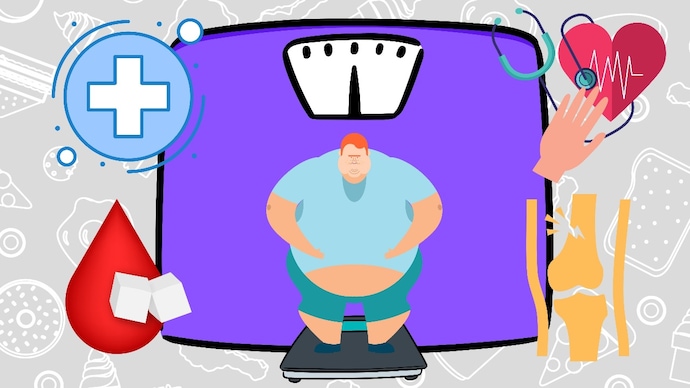Half of India’s population is not physically active: Study reveals worrying trend
A recent report by the World Health Organisation shows that nearly half of India’s adult population does not engage in enough physical activity. This trend has worsened significantly since the year 2000, posing serious health risks.

Nearly half of India’s adult population does not engage in enough physical activity, according to new data from the World Health Organisation (WHO).
New data published in The Lancet Global Health reveals a worrying trend, with the prevalence of insufficient physical activity in India increasing from 22.3% in 2000 to 49.4% in 2022.
The data showed that more women (57.2%) than men (42%) did not exercise enough in 2022.
According to the study, if this trend continues, more than 60% of India’s adult population may be unhealthy by 2030, increasing the risk of various non-communicable diseases such as cardiovascular problems, type 2 diabetes and inadequate physical activity.
The WHO recommends adults do at least 150 to 300 minutes of moderate aerobic activity or 75 to 150 minutes of vigorous activity per week. Inadequate physical activity is defined as not meeting these guidelines. According to the WHO, lack of exercise increases the risk of heart disease, type 2 diabetes, dementia, and certain cancers.
Globally, India ranks 12th among 195 countries in terms of insufficient physical activity.
Around 31% of adults worldwide, or about 1.8 billion people, will not be able to meet recommended activity levels in 2022.
“Physical inactivity is a silent threat to global health, contributing significantly to the burden of chronic diseases. This reflects a worrying trend of increasing physical inactivity among adults,” said Dr Rüdiger Krech, Director of Health Promotion at the World Health Organisation.
The highest rates of inactivity were found in high-income Asia-Pacific (48%) and South Asia (45%), while rates in other regions ranged from 28% in high-income Western countries to 14% in Oceania.
“Physical inactivity is increasing globally for a variety of reasons,” Dr. Krech said. These include a tendency to work in a more sedentary job, environmental changes making active transportation more difficult, and more screen-based leisure activities.
Physical inactivity is still more common among women than men globally, where the inactivity rate is 34% compared to 29%.
The World Health Organization has urged that to tackle this growing problem it is necessary to create an environment that makes physical activity easier and more accessible to all.
“We must renew our commitments to increase physical activity levels and prioritise bold action, including strong policies and increased funding, to reverse this worrying trend,” said Dr Tedros Adhanom Ghebreyesus, World Health Organisation Director-General.
